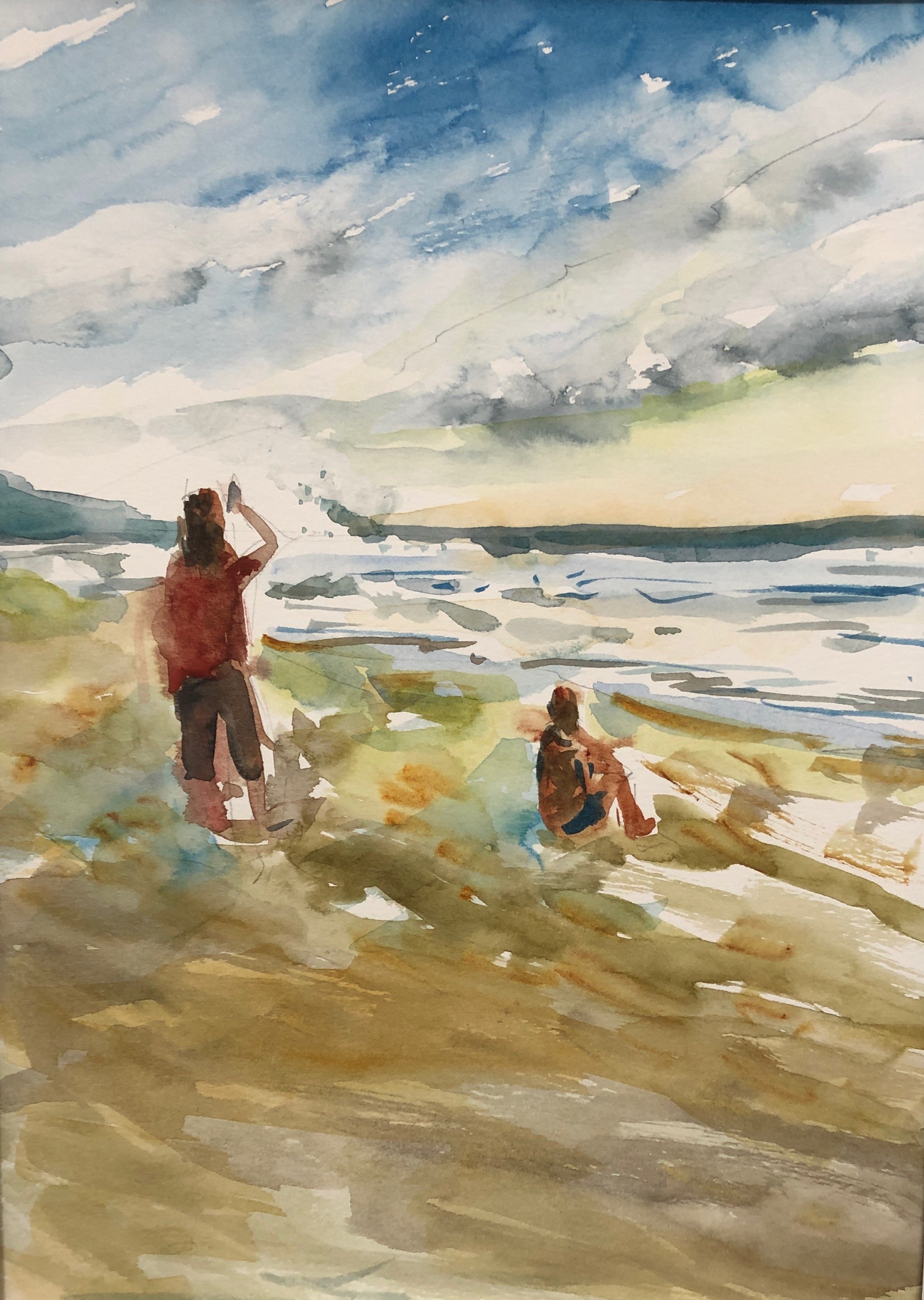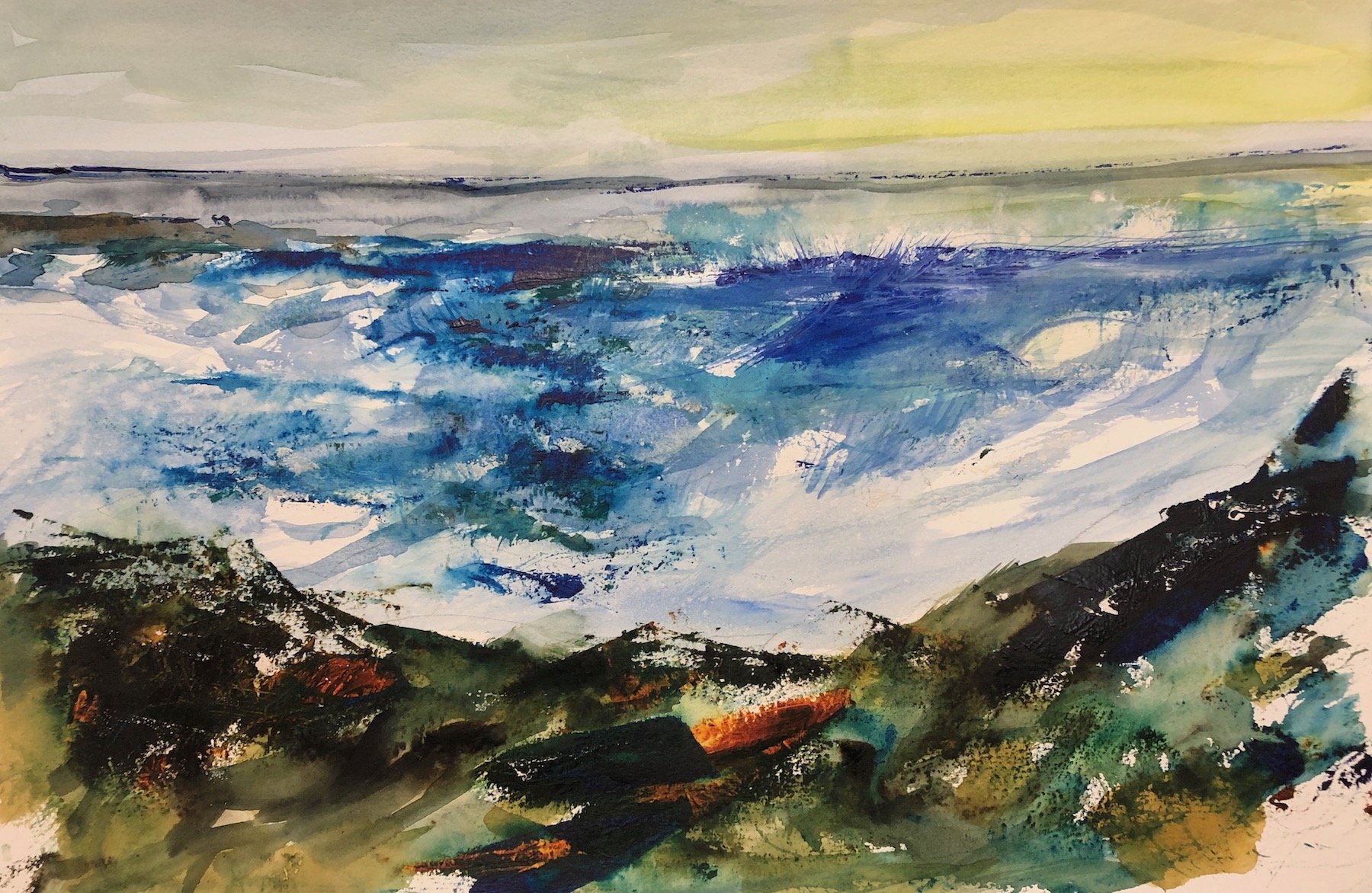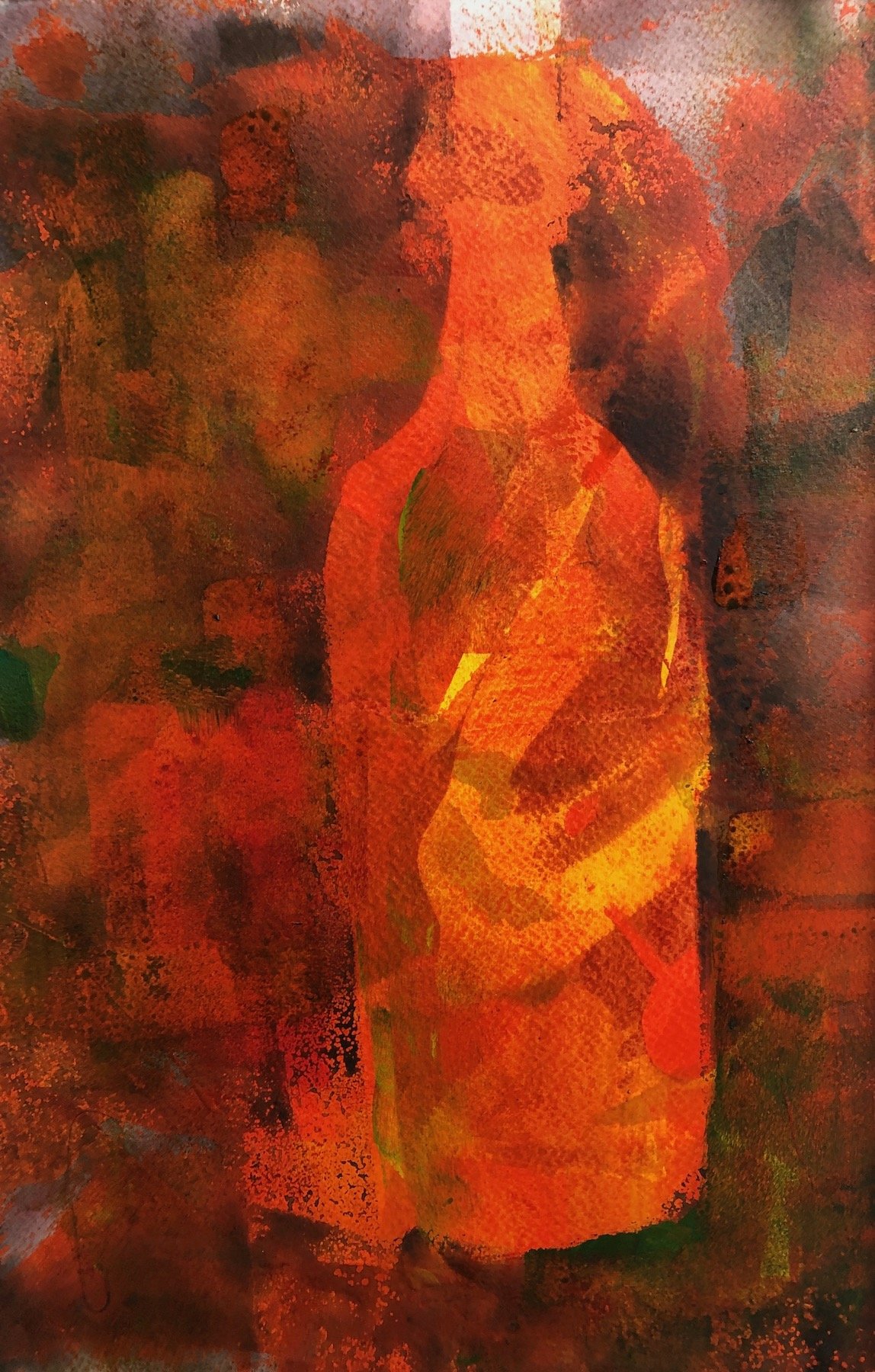Four of my paintings were selected for the 2022 Hawai’i Watercolor Society Open Show.
North Shore, 11x15, ©Rochelle Weidner
The Ironwoods, 11x15, ©Rochelle Weidner
The View, 15x11, ©Rochelle Weidner
Cloud Forms, 12x16, ©Rochelle Weidner
Your Custom Text Here
Four of my paintings were selected for the 2022 Hawai’i Watercolor Society Open Show.

North Shore, 11x15, ©Rochelle Weidner

The Ironwoods, 11x15, ©Rochelle Weidner

The View, 15x11, ©Rochelle Weidner

Cloud Forms, 12x16, ©Rochelle Weidner
Three of my paintings were selected for the Hawai’i Watercolor Society 2022 Members’ Show. Shark Cove won the M. Graham & Co. Award.

Shark Cove. Winner - The M. Graham & Co. Award, 12x18 ©Rochelle Weidner

Red Bottle 31, 14x10, ©Rochelle Weidner

Field Flowers, 21x15, ©Rochelle Weidner
Two of my paintings were accepted into the HWS Spring Member’s Show at the Downtown Art Center, March 30th-April 24th, 2021.

Green Teapot, 18”x12” ©Rochelle Weidner

Desert Mountain, 14”x20” ©Rochelle Weidner
Three of my paintings were accepted into the HWS 2020 Members Show, viewable online at hawaiiwatercolorsociety.org/show-images.

Honolulu Skyline, 12x16

Into the Deep 22x15

Pelican View 16x12
Patron of the Clouds will be on display at the 2017 ISEA Annual Exhibition in Sanibel Island, Florida. https://www.iseaartexhibit.org. Accepted images can be viewed online.

Patron of the Clouds ©2017 Rochelle Weidner
The ISEA (International Society of Experimental Artists) 26th Annual Juried Exhibition will be shown October 3 through November 30, 2017, at Big Arts, Sanibel, Florida.

Location:
Honolulu MedSpa
1650 Liliha Street
Honolulu, HI 96815
Open Monday - Saturday: 9 a.m. - 6 p.m.
(closed Sundays)
Closing Reception is Wednesday, August 30th: 6:30 - 8:30 p.m. Parking is available in the lot.

Gallery at the Pali
Art by Anita Bruce, Patrice Federspiel, Rebecca Snow and Rochelle Weidner.
Art is the expression of the human condition. Watch the unfolding of four women as they learn to “live life out loud” through the painting process. See the influence of family, friends, teachers and experimentation shown in their personal paths to self-expression
Artist's Reception: Saturday, February 25, 2017 from 6:00 to 8:00 p.m.
On Display: Sunday, February 12, 2017 – Thursday, March 23, 2017
On the web: Unitariansofhi.org/exhibits
Gallery on the Pali
located at the First Unitarian Church
2500 Pali Highway, Honolulu, HI 96817
Gallery Hours: Tuesday through Friday 10am to 6pm, weekends 2-6pm (Beginning March 1st T-F, 9 am to 2 pm)

Plant in Motion, 11" x 14"

Nature's Close-Up, 11" x 14"
January 8th through January 28th, 2017
Reception 4-6 pm January 14th.
This exhibition is inspired by the beauty of the park and gardens and is dedicated to the staff, which maintains this enormous complex day in, and day out all year long, making it the perfect artist’s workshop. In the Visitor Center Main Gallery.
This show is a triad reflection on the mana of Hawaii by Rochelle Weidner, Anita Bruce and Rebecca Snow. In the words of the artists themselves, “living in Hawaii alters one’s soul. The presence of tradition, of ancient culture, and the revered gods and goddesses permeate the consciousness, and for the artists in all of us, the desire to recreate this energy and strength is compelling. This show represents our own interpretations of this subconscious force, this mana of Hawaii.”
On display Sunday, January 11th through February 12th
Artists Reception: Saturday, January 17th, 5-7 pm
Gallery Hours: T-F, 10 am-6 pm & S/S, 2-6 pm
Gallery on the Pali at the First Unitarian Church of Honolulu
2500 Pali HIghway. 808.595.4047

I have paint imbedded in my fingernails. Comes from trying to paint with a string covered in watercolor paint. Why, you may ask? If you are an adventurous watercolorist, you know why. Because you want to try something new, achieve an effect that you saw somewhere, but have no idea how it was done. So you analyze, and study. It wasn’t a brush or a rule or a palette knife – no details are forthcoming from the artist, who may or may not be around to ask, so you play. Paper may get tossed, and certainly you’ve dumped a ton of paint around in various shapes. The wind comes along and gives you a new effect, but alas, it can’t be counted on. I paint outside for the most part, more of necessity in finding space, but plein aire painters get interesting adds to their work; bird droppings, leaves, fast showers.
The vertical landscape you were working on morphs into something else. The hill becomes the sea, and sea a cloud and as you flip it on its side, you see that the paint spoke for you and made a completely different painting than the one you thought you were going to do. One that is much more interesting than what our mundane minds set out to do.
How many more landscapes do we need in the world of orderly nature, with everything in its place, according to some photograph we snapped one day from the car window? We need to put down the camera and open our eyes, and close our minds, and see form and shadow and scary things that we shouldn’t paint at all. Let a mood suggest a painting or a television show or a child.
Do you want to be tagged? Do you want people to say, oh yes, I know so-and-so, and they paint “blah”. Insert triteness here. Known for your flowers, paint nude sunbathers for awhile. Known for your pretty little seascapes, paint monsters for a week.
“Be a warhorse for work, and enjoy even the struggle against defeat. Keep painting…. Don’t believe sitting in an art school and patiently patting paint on canvas will make you an artist. There is more to it than that.” Robert Henri
Robert Henri, 1897
I am reading a marvelous book called The Art Spirit by Robert Henri. Yes, I had to look up who he was, as the name didn’t ring any bells of recognition. Henri died in 1929, and he was known as the founder of the Ashcan School, whose followers felt it important to represent real life, real as mud, to portray the gritty realism of human life, and forgo the academic painting, spurning the art of mere surface.
Henri was a teacher, and felt that art should vitally communicate, and he was one of the first to bring the French painters to the attention and study of American painters. He taught at the Art Students League of New York, and was a mentor to women artists.
But you can read his biography online; this is about his words. The book is a compilation of his teachings, and his philosophy about art and life. It isn’t a book you’ll sit down and read cover to cover, it is one you will open and find a sentence or a paragraph that resonates. It reminds you that art is about communicating. What story does your painting tell? What are trying to get people to see in your work?
Letter to the Class: 1915
“An interest in the subject, something you want to say definitely about the subject, this is the first condition of a portrait. The processes of painting spring from this interest, this definite thing to be said. Completion does not depend on material representation. The work is done when this special thing has been said.”
The Brush Stroke:
“Strokes carry a message whether you will it or not. The stroke is just like the artist that makes it. All the certainties, all the uncertainties, all the bigness of his spirit and all the littlenesses are in it.”
**
“Keep your old work. You did it. There are virtues and there are faults in it for you to study. You can learn more from yourself than you can from anyone else.”
“Don’t follow the critics too much. Art appreciation, like love, cannot be done by proxy. It is a very personal affair and is necessary to each individual.”
“Furniture and clothes are the escape of the bad artist.” “Be interested in the containing power of the wall.” “There are many colors, and they are all moving, moving.”
“The real artist’s work is a surprise to himself.”
Go surprise yourself.